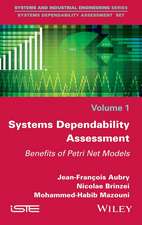Modeling the Environment, Second Edition
Autor Andrew Forden Limba Engleză Paperback – 10 noi 2009
Modeling the Environment was the first textbook in an emerging field—the modeling techniques that allow managers and researchers to see in advance the consequences of actions and policies in environmental management. This new edition brings the book thoroughly up to date and reaffirms its status as the leading introductory text on the subject.
System dynamics is one of the most widely known and widely used methods of modeling. The fundamental principles of this approach are demonstrated here with a wide range of examples, including geo-hydrology, population biology, epidemiology and economics. The applications demonstrate the transferability of the systems approach across disciplines, across spatial scales, and across time scales. All of the models are implemented with stock and flow software programs such as Stella and Vensim. These programs are easy and fun to learn, and they allow students to develop realistic models within the first few weeks of a college course.
System dynamics has emerged as the most common approach in collaborative projects to address environmental problems. The stock and flow structures and the emphasis on feedback control provide a common language that is understood by scientists from many disciplines. Although the interdisciplinary approach described here is widely used in practice, there are few books to aid instruction. Modeling the Environment meets the urgent need for instructional materials in interdisciplinary modeling of environmental systems.
Visit http://www.wsu.edu/~forda/AA2nd.html for valuable classroom materials.
System dynamics is one of the most widely known and widely used methods of modeling. The fundamental principles of this approach are demonstrated here with a wide range of examples, including geo-hydrology, population biology, epidemiology and economics. The applications demonstrate the transferability of the systems approach across disciplines, across spatial scales, and across time scales. All of the models are implemented with stock and flow software programs such as Stella and Vensim. These programs are easy and fun to learn, and they allow students to develop realistic models within the first few weeks of a college course.
System dynamics has emerged as the most common approach in collaborative projects to address environmental problems. The stock and flow structures and the emphasis on feedback control provide a common language that is understood by scientists from many disciplines. Although the interdisciplinary approach described here is widely used in practice, there are few books to aid instruction. Modeling the Environment meets the urgent need for instructional materials in interdisciplinary modeling of environmental systems.
Visit http://www.wsu.edu/~forda/AA2nd.html for valuable classroom materials.
Preț: 310.34 lei
Nou
Puncte Express: 466
Preț estimativ în valută:
59.40€ • 64.55$ • 49.93£
59.40€ • 64.55$ • 49.93£
Carte disponibilă
Livrare economică 31 martie-14 aprilie
Livrare express 15-21 martie pentru 46.12 lei
Preluare comenzi: 021 569.72.76
Specificații
ISBN-13: 9781597264730
ISBN-10: 1597264733
Pagini: 400
Ilustrații: 324 illustrations
Dimensiuni: 178 x 254 x 23 mm
Greutate: 0.7 kg
Ediția:Second Edition, Second Edition, Second Edition
Editura: Island Press
Colecția Island Press
ISBN-10: 1597264733
Pagini: 400
Ilustrații: 324 illustrations
Dimensiuni: 178 x 254 x 23 mm
Greutate: 0.7 kg
Ediția:Second Edition, Second Edition, Second Edition
Editura: Island Press
Colecția Island Press
Notă biografică
Andrew Ford is professor of environmental science at Washington State University, where he teaches system dynamics modeling. He has developed a wide range of models dealing with energy and environmental policy. His simulation of uncertainty in dynamic models was honored with the Jay Wright Forrester Award as an outstanding contribution to the field of system dynamics.
Cuprins
Preface
Acknowledgments
PART I. Introductory Modeling
Chapter 1. Introduction
Chapter 2. Software: Getting Started with Stella and Vensim
Chapter 3. Stocks and Flows: The Building Blocks of System Dynamics Models
Chapter 4. Accumulating the Flows
Chapter 5. Water Flows in the Mono Basin
Chapter 6. Equilibrium Diagrams
Chapter 7. S-Shaped Growth
Chapter 8. Epidemic Dynamics
Chapter 9. Information Feedback and Causal Loop Diagrams
Chapter 10. Homeostasis
Chapter 11. Temperature Control on Daisyworld
PART II. Intermediate Modeling
Chapter 13. The Modeling Process
Chapter 14. Software: Further Progress with Stella and Vensim
Chapter 15. The Salmon of the Pacific Northwest
Chapter 16. Managing a Feebate Program for Cleaner Vehicles
Chapter 17. Modeling Pitfalls
Chapter 18. Introduction to Cyclical Behavior
Chapter 19. Cycles in Real Estate Construction
Chapter 20. Cycles in Predator and Prey Population
Chapter 21. The Overshoot of the Kaibab Deer Population
Chapter 22. DDT in the Ocean
Chapter 23. CO2 in the Atmosphere
Chapter 24. Concluding Perspective
Appendices Review and Advanced Methods
Appendix A Review of Units
Appendix B Review of Exponential Growth
Appendix C Software Choices and Individual-Based Models
Appendix D Sensitivity Analysis and Uncertainty
Appendix E. Incorporating Other Methods in a System Dynamics Model
Appendix F. Short-Run and Long-Run Dynamics in a Single Model
Appendix G. Spatial Dynamics and Spatial Displays
References
Index
Acknowledgments
PART I. Introductory Modeling
Chapter 1. Introduction
Chapter 2. Software: Getting Started with Stella and Vensim
Chapter 3. Stocks and Flows: The Building Blocks of System Dynamics Models
Chapter 4. Accumulating the Flows
Chapter 5. Water Flows in the Mono Basin
Chapter 6. Equilibrium Diagrams
Chapter 7. S-Shaped Growth
Chapter 8. Epidemic Dynamics
Chapter 9. Information Feedback and Causal Loop Diagrams
Chapter 10. Homeostasis
Chapter 11. Temperature Control on Daisyworld
PART II. Intermediate Modeling
Chapter 13. The Modeling Process
Chapter 14. Software: Further Progress with Stella and Vensim
Chapter 15. The Salmon of the Pacific Northwest
Chapter 16. Managing a Feebate Program for Cleaner Vehicles
Chapter 17. Modeling Pitfalls
Chapter 18. Introduction to Cyclical Behavior
Chapter 19. Cycles in Real Estate Construction
Chapter 20. Cycles in Predator and Prey Population
Chapter 21. The Overshoot of the Kaibab Deer Population
Chapter 22. DDT in the Ocean
Chapter 23. CO2 in the Atmosphere
Chapter 24. Concluding Perspective
Appendices Review and Advanced Methods
Appendix A Review of Units
Appendix B Review of Exponential Growth
Appendix C Software Choices and Individual-Based Models
Appendix D Sensitivity Analysis and Uncertainty
Appendix E. Incorporating Other Methods in a System Dynamics Model
Appendix F. Short-Run and Long-Run Dynamics in a Single Model
Appendix G. Spatial Dynamics and Spatial Displays
References
Index
Descriere
Modeling the Environment was the first textbook in an emerging field—the modeling techniques that allow managers and researchers to see in advance the consequences of actions and policies in environmental management. This new edition brings the book thoroughly up to date and reaffirms its status as the leading introductory text on the subject.
System dynamics is one of the most widely used methods of modeling. The fundamental principles of this approach are demonstrated here with a wide range of examples, including geohydrology, population biology, epidemiology, and economics. The applications demonstrate the transferability of the systems approach across disciplines, across spatial scales, and across time scales. All of the models are implemented with stock and flow software programs such as Stella and Vensim, which are easy for students to learn and use.
Visit http://www.wsu.edu/~forda/AA2nd.html for valuable classroom materials.











